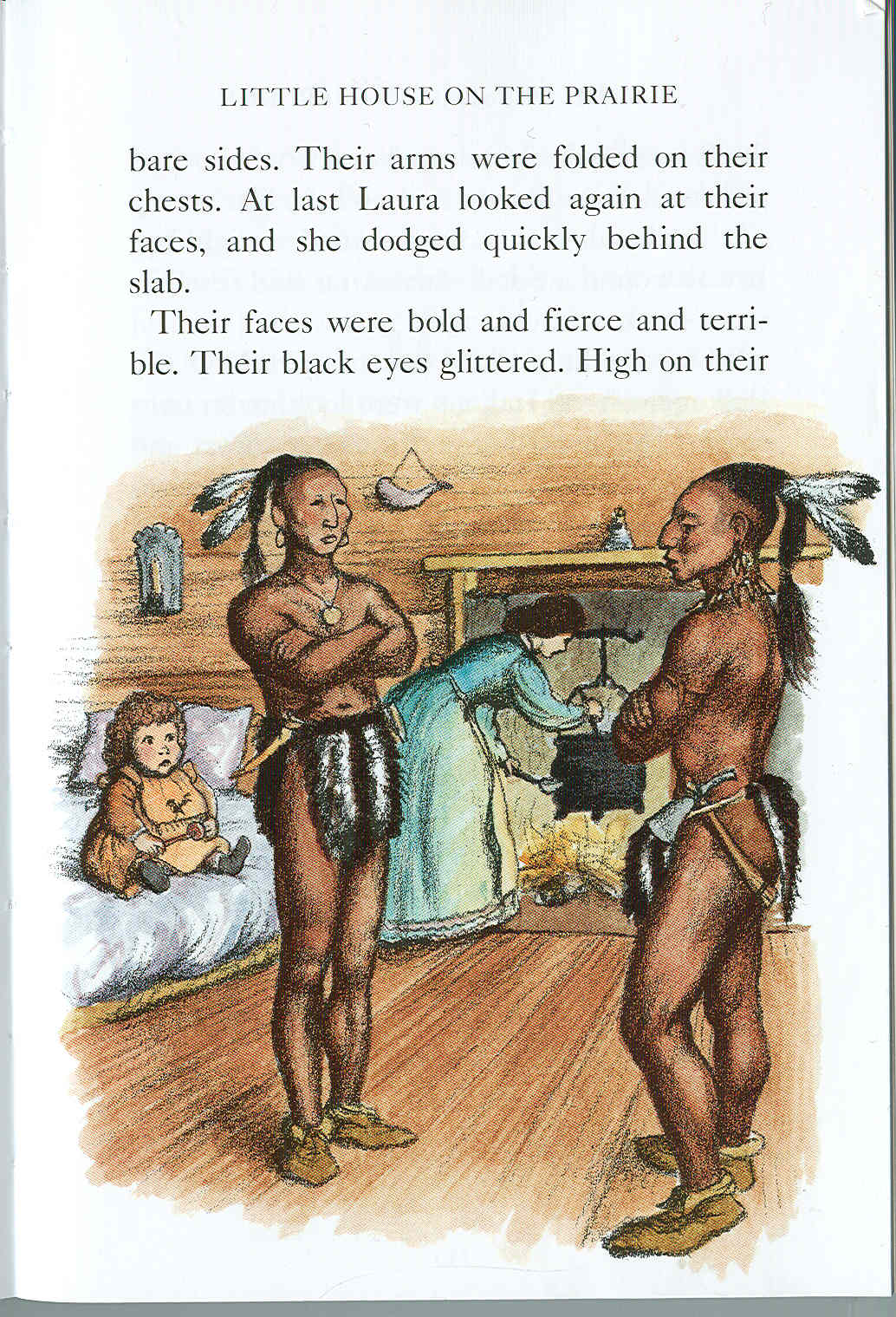American Indians in Fact and Fiction: Little House on the PrairieClassic and award-winning books of historical fiction suggest---powerfully---that American Indians were primitive people. Through these books, children are allowed to think that Indians were less-than-human. Primitive in lifestyle. Primitive in intellect.
But, that is not the case.
Here's a few facts to consider next time you read Laura Ingalls Wilder's Little House on the Prairie.
Charles took his family into "Indian Territory" in 1868.
By then, about 800--yes, that's right 800--treaties had been negotiated between the tribes and the federal government.American Indians in Fact and Fiction: Little House on the Prairie (part 2)I'm critical of Wilder and a good many other writers for the ways they describe Indians in their books. When you have a minute, read the passage in Little House where the Indians enter the house. Something about them smells bad. Laura realizes it is the "fresh" skunk skins they are wearing. They are, apparently, impervious to the pungent skunk odor! Let's back that up, though. Wouldn't they know how to skin skunks without puncturing the glands where the skunk oil is? Wouldn't they prepare the skin by tanning it before wearing it?(Excerpted from Debbie Reese's
American Indians in Children's Literature, 2/16/08 and 2/17/08.)
Comment: This is a classic case of
bitchin' and moanin' about--i.e., criticizing--someone's work. Reese has nothing good to say about
Little House on the Prairie and its stereotypes. Yet the book is set in stone, its author dead and gone, so what purpose does it serve?
Simple. Reese's criticism educates children, parents, and teachers about the mistakes and omissions in
Little House on the Prairie. Armed with the information, they can read it more critically or avoid it altogether.



6 comments:
Writerfella here --
'Indian Territory' in the Ingalls books was 'The Northwest,' which now is Wisconsin and Minnesota. That writer likely received his NATIONAL GEOGRAPHIC one month with the map having been stolen by the postman...
All Best
Russ Bates
'writerfella'
Wrong again, Russ. If only you did a little research before spouting off.
http://en.wikipedia.org/wiki/Little_House_on_the_Prairie#Story
At the beginning of this story, Pa Ingalls decides to sell the house in the Big Woods of Wisconsin, and move to the Indian Territory near Independence, Kansas, based on widely circulating stories at that time that the land (technically still under Osage ownership) would be opened to settlement imminently. So Laura, along with Pa and Ma, and Mary and baby Carrie, move to Kansas.
http://en.wikipedia.org/wiki/Little_House_on_the_Prairie#Actual_location_of_the_.22Little_House.22
Laura had always heard from her family that the little house was "40 miles from Independence," which would have put the house approximately where the town of Nowata, Oklahoma, is today. It was about 13 miles from Independence, not 40 miles, and the reason for this rather large discrepancy is not known. The actual site of the Charles Ingalls house in Indian Territory was established conclusively in the late 1950s through careful record research done by a librarian named Margaret Clement. Today there is a facsimile log cabin on that site, near Wayside, Kansas.
Writerfella here --
Except that 'Indian Territory' included NONE of what is now Kansas and is in fact all of which is now Oklahoma. Ask the Cherokee and Chickasaw and Creek and Choctaw and Seminole, as they were promised the entire territory as their own, only to find that 30 other tribes also were to be incarcerated there as well. Thus, your argument is theirs to discuss and not Michael Landon's...
All Best
Russ Bates
'writerfella'
One, you're wrong about the definition of "Indian Territory." From the US Military Dictionary:
http://www.answers.com/topic/indian-territory
The land west of the Mississippi River that was set aside by the Indian Intercourse Act of 1834 for relocated Native American tribes. The land, which included the area in present-day Oklahoma north and east of the Red River, Kansas, and Nebraska, came to be known as Indian Territory, though it was never an organized territory as others were. The term is also used more specifically to denote the area to which the Five Civilized Tribes (Choctaw, Creek, Seminole, Cherokee, and Chickasaw) were forced to move by treaties between 1820 and 1845.
Two, you said the Ingalls moved to "Indian Territory" in Wisconsin or Minnesota. Wrong. They moved to Indian Territory in Kansas, as I just told you.
Again, I'd suggest doing some research before you spout off. Every time you open your mouth, you seem to make a mistake about something.
As for your claim about the five tribes, we've already had a good laugh over that one. See Five Oklahoma Tribes Deny Others? for details.
Post a Comment